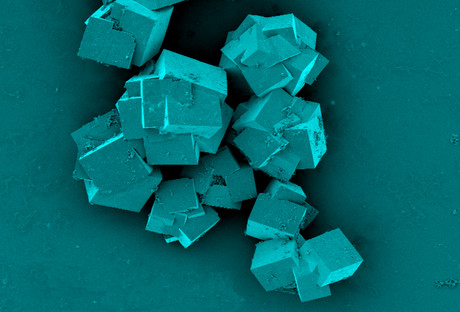Pretty MOFs all in a row

Australian, Austrian and Japanese scientists have found a way to harness the potential of designer crystals known as metal-organic frameworks (MOFs) — said to be the most porous materials on the planet.
Originally discovered in 1999, MOFs have so many holes inside them that a single teaspoon of the powdery material has the same surface area as a football field. Australia’s own CSIRO has already used MOFs to develop a molecular shell to protect and deliver drugs and vaccines, a ‘solar sponge’ that can capture and release carbon dioxide emissions and plastic material that gets better with age.
But although MOFs have been utilised in pharmaceuticals, electronics and horticulture, one of the roadblocks to realising their full potential is their erratic structure, which makes it difficult to integrate the materials into functional devices. Now, researchers have found a way to control the structure of MOFs and align them in one direction, creating a MOF film.
“Having the MOFs in alignment means they conduct a current far better, opening up more electrical uses such as implantable medical devices that give real-time information about someone’s health,” said CSIRO scientist Dr Aaron Thornton, a co-author on the study.
“MOFs could also be structured in such a way that they’d only react with certain compounds or elements — for example, miners could wear clothes impregnated with a layer of MOFs that tell them when dangerous gases are building up.”
The scientists proved the MOFs were in alignment by placing a polarisable fluorescent molecule in aligned MOFs. The perfectly aligned MOFs were made to light up along the one axis, and the light could be turned on or off by rotating the film.
Writing in the journal Nature Materials, the researchers speculate that their MOF films could be applied in technologies such as optics, microelectronics, microfluidics and sensing. According to Dr Thornton, “The possibilities are endless.”
'Optical tweezers' could help study living cells
Physicists are using the tweezers to measure activity within microscopic systems over timeframes...
Aerosol test for airborne bird flu developed
The low-cost sensor detects the virus at levels below an infectious dose and could lead to rapid...
Superelastic alloy functions in extreme temperatures
The titanium-aluminium superelastic alloy is not only lightweight but also strong, offering the...




